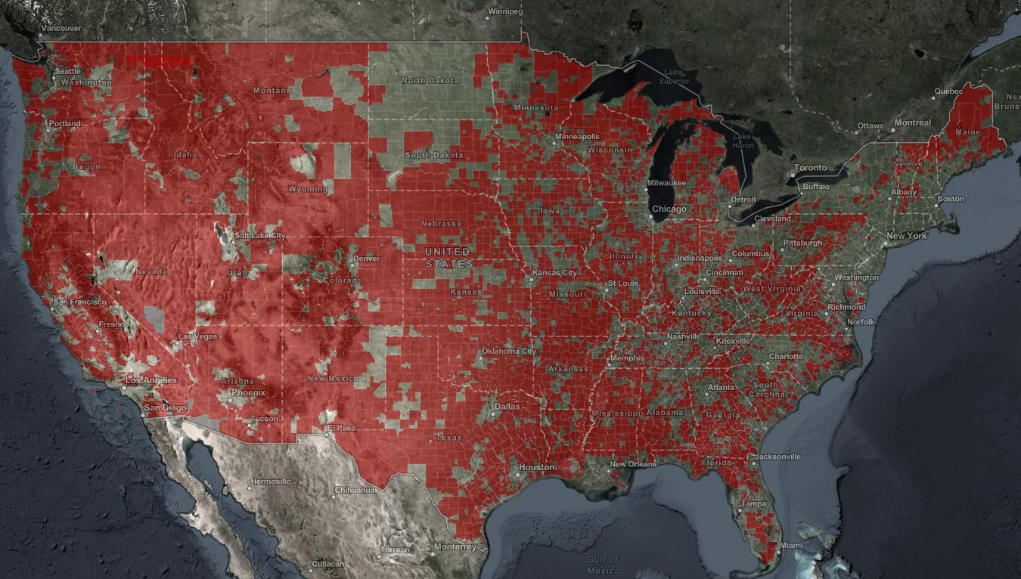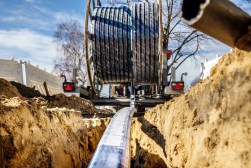At least half of BEAD locations no longer eligible for funding, report claims

The number of locations across the country previously identified as eligible to receive funds through the federal Broadband Equity, Access, and Deployment program has declined by more than half, according to a report released Wednesday by the Advanced Communications Law & Policy Institute at New York Law School.
The ACLP’s analysis shows the “surprisingly large” decrease in the total number of BEAD-eligible locations since allocations were set in 2023, with the number of locations that are underserved with quality internet service or lack access all together decreasing by an average of 57% across the 46 states evaluated. (Four states — New Jersey, North Carolina, Ohio and Texas — haven’t made their challenge process data publicly available.)
With the decline in underserved or unserved locations, the report found that the U.S. is closer than ever to closing the digital divide. It analyzed the results of the BEAD challenge process most states conducted from 2023 to 2024, during which states gathered information to identify unserved and underserved locations against data gathered by the Federal Communications Commission. The challenge process informed the intital proposals states submitted to the National Telecommunications and Information Administration on how they would spend their portion of the funds. The allocations were set in 2023 using 2022 data gathered by the FCC.
To determine the drop, the ACLP compared data from states’ challenge processes, which set a number of locations they deemed underserved or unserved, and therefore eligible for BEAD, to the most recent data from the FCC’s National Broadband Map, which was last gathered last June 30, and to the FCC data used by NTIA to calculate BEAD funding allocations.
While some states only saw a 15% or 20% drop in BEAD eligible locations, others saw rather dramatic drops between 2022 and 2024. In South Carolina, there’s been an 84% decrease in eligible locations. The report attributed these changes to continued investment by internet service providers to extend their networks, and additional grant-funded projects via American Rescue Plan broadband funds and the Rural Digital Opportunity Fund, a program the FCC created during Donald Trump’s first presidency.
But the wealth of funding for broadband expansion projects also creates the possibility for overfunding some locations, which the report said has resulted in some eligible locations receiving double the funding they were set to get through BEAD. Some broadband advocacy groups have pointed to overfunding as a potential problem with BEAD.
“With fewer eligible BEAD locations, states have more funding available on a per-location basis to close their digital divides. Indeed, in some cases, states now have double or triple the amount of funding per eligible location than they had when NTIA allocated funding two years ago,” the report read. “Consequently, it is more likely than ever that the U.S. will be able to achieve 100% broadband availability with the current allocations, and more of those allocations can probably be served by terrestrial networks.”
The report also notes BEAD’s strict “fiber first” stipulations, which require states to prioritize installing fiber-optic infrastructure where it’s financially feasible.
The rules, in some cases, have created hurdles for states with isolated areas and tough terrain that may have benefited from a non-terrestrial internet connection, such as low Earth orbit satellite internet service, even if the cost wasn’t prohibitive.
U.S. Commerce Secretary Howard Lutnick, several state leaders and federal lawmakers are pushing to allow states to give more of their BEAD funding to satellite internet service providers. This push is also at the center of forthcoming changes to the BEAD program that Lutnick announced in March.
The report also notes that although the digital divide has narrowed, the areas still needing connectivity may be the “most expensive and challenging” to connect with fiber, potentially increasing the likelihood of needing alternatives like LEO satellite or fixed wireless connections. But even so, reliance on LEO satellite for BEAD projects appears to have narrowed to serving as a “gap filler,” instead of a predominant provider to extremely high-cost locations, the report said.
The ACLP recommends excess BEAD funds be reallocated to states that need more funding to achieve 100% broadband availability. Thereafter, the report said, the NTIA could return remaining BEAD funds to the Treasury or make them available to states for other uses.






